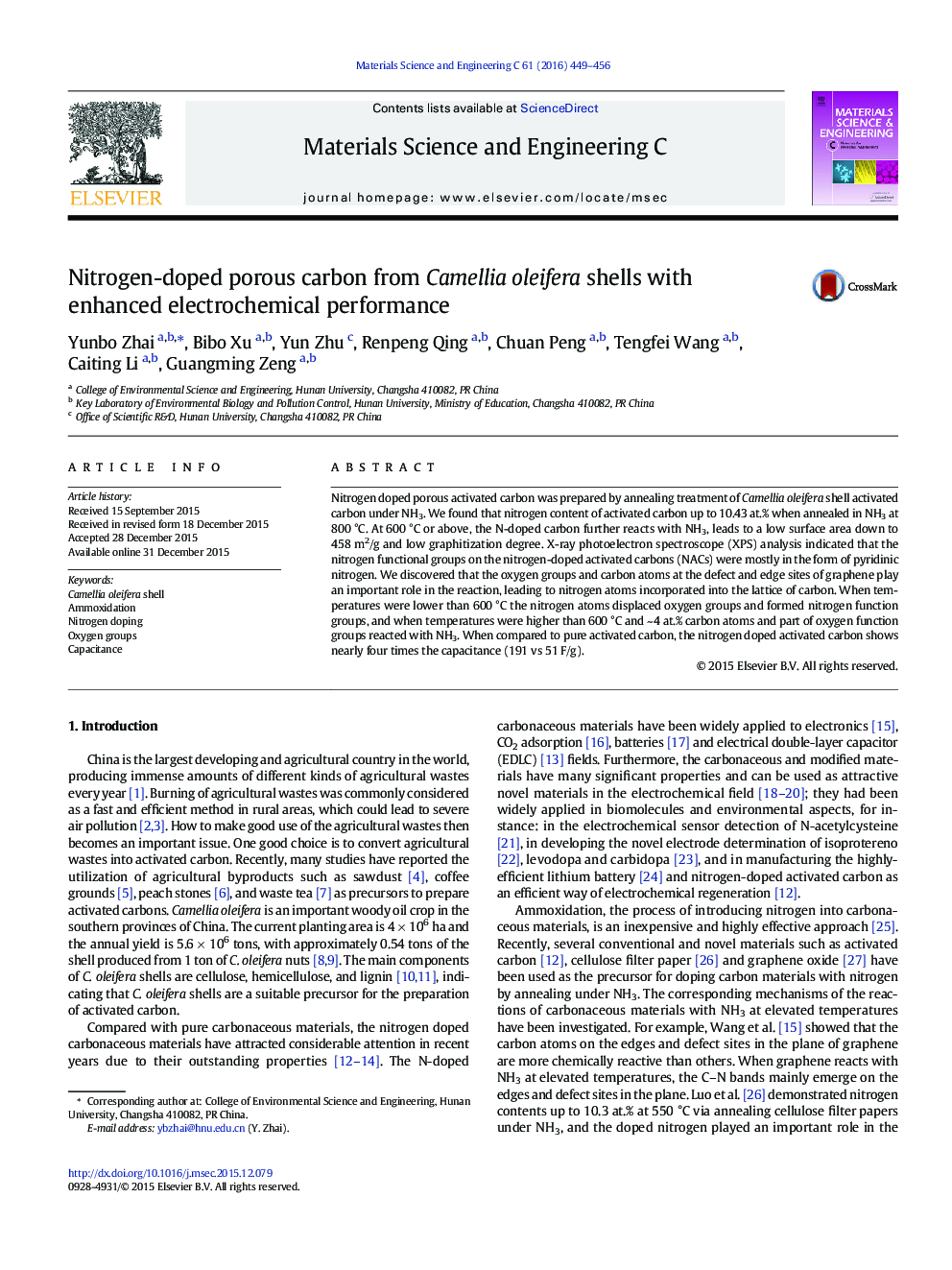| Article ID | Journal | Published Year | Pages | File Type |
|---|---|---|---|---|
| 7868218 | Materials Science and Engineering: C | 2016 | 8 Pages |
Abstract
Nitrogen doped porous activated carbon was prepared by annealing treatment of Camellia oleifera shell activated carbon under NH3. We found that nitrogen content of activated carbon up to 10.43 at.% when annealed in NH3 at 800 °C. At 600 °C or above, the N-doped carbon further reacts with NH3, leads to a low surface area down to 458 m2/g and low graphitization degree. X-ray photoelectron spectroscope (XPS) analysis indicated that the nitrogen functional groups on the nitrogen-doped activated carbons (NACs) were mostly in the form of pyridinic nitrogen. We discovered that the oxygen groups and carbon atoms at the defect and edge sites of graphene play an important role in the reaction, leading to nitrogen atoms incorporated into the lattice of carbon. When temperatures were lower than 600 °C the nitrogen atoms displaced oxygen groups and formed nitrogen function groups, and when temperatures were higher than 600 °C and ~ 4 at.% carbon atoms and part of oxygen function groups reacted with NH3. When compared to pure activated carbon, the nitrogen doped activated carbon shows nearly four times the capacitance (191 vs 51 F/g).
Related Topics
Physical Sciences and Engineering
Materials Science
Biomaterials
Authors
Yunbo Zhai, Bibo Xu, Yun Zhu, Renpeng Qing, Chuan Peng, Tengfei Wang, Caiting Li, Guangming Zeng,
